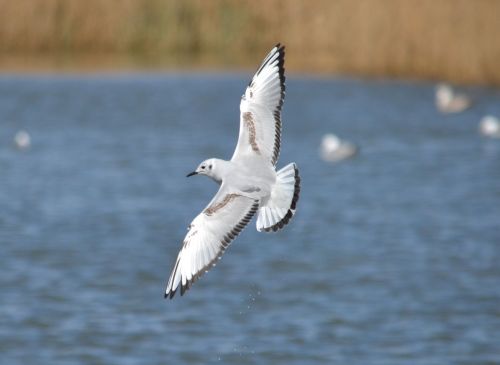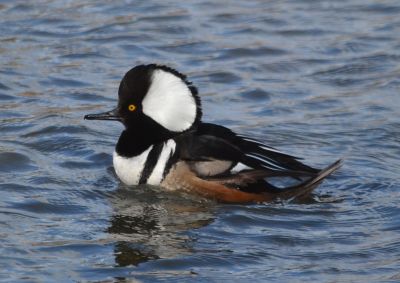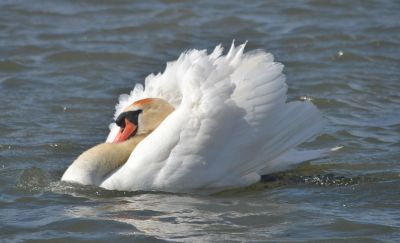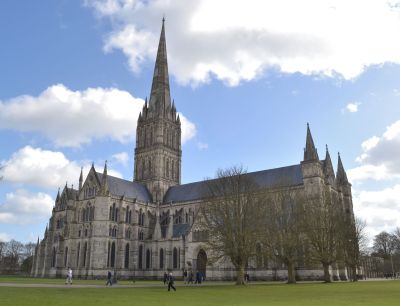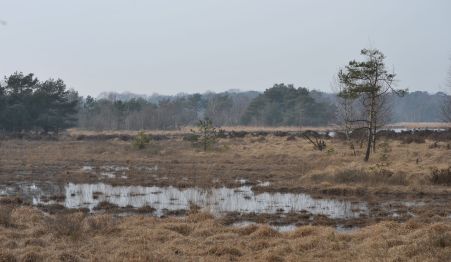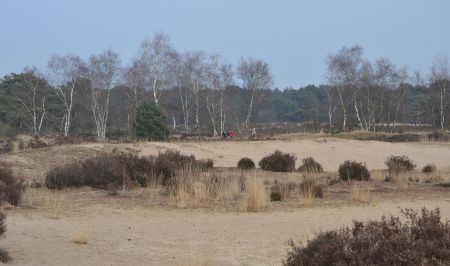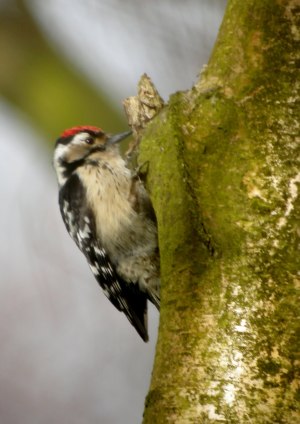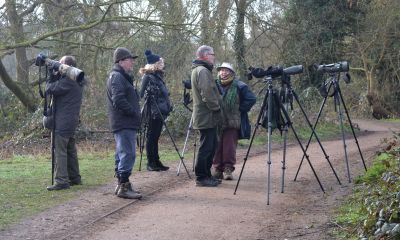If the most satisfying bird life list additions are those that require a bit of working at then this was a minor classic. I had failed previously to find Wallcreeper on both my spring trips to Provence in 2012 and 2013. This Alpine species winters on rocky inland cliff faces such as that region of France abounds with before returning to higher altitude usually in April. And the presence of one as far north as Dinant in south-east Belgium struck me as a rare opportunity being conveniently much nearer. This bird was discovered here on 30 December and is the first reported in Belgium since 1988.
From the blogs of those Oxonbirders who travel regularly to see birds it is plain that we share a common motivation. Every so often we just have to get away again. Hence, with the same birds appearing day after day on British RBA and the spring passage in its earliest phase, I decided to indulge in a trip a little further afield. Dinant lies in a spectacular gorge through which the River Meuse flows in the Ardennes region. Like many people perhaps, I have travelled through Belgium more often than stopping there, and this was an area I had for some years wanted to experience more closely.
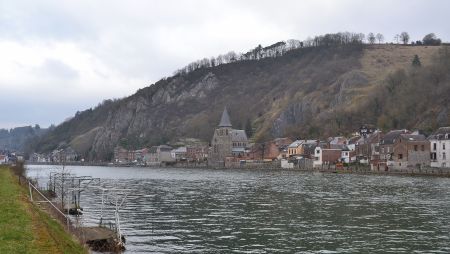
Meuse gorge, Dinant
I arrived in the town late on Saturday afternoon amidst the kind of overcast murk that had been sapping my spirits at home. The recent directions on RBA had said merely ‘Montagne de la Croix’ or ‘Meuse’ and the bird had last been reported on 14 March. From the picture (above) it can be seen there is a vast amount of habitat in which a Wallcreeper might lose itself. MdlC was the name of a steep road leading out of Dinant, but there was only one small rock face there that was suitable. I checked some other cliffs nearby to get bearings before a Sunday visit, then headed for my overnight stay in nearby Falaën.
The choice of stopover proved to be a distraction since in the morning I elected to explore briefly the picturesque ‘Haute-Meuse’ in which my hotel lay before resuming the quest. This scenic area of winding roads through deep river valleys, abbeys, fortresses and chateaux is a playground for outdoor activities of the man-made kind, and is also very popular with bikers. Hence I was pleased to be here out of season, even though overcast skies remained from the previous day.

Dinant: citadel and Montagne de la Croix (to right on skyline either side of church)
Returning to Dinant at around 11am I scanned all the rock faces for the Wallcreeper between Montagne de la Croix and the citadel, without success. Walking back again I ran into the first Belgian birders of the weekend who were watching a cliff behind the Palais de Justice and Police station (pictured below). This was on the corner of Place de Palais Justice and Rue en Rhee. The two ladies, who had the Belgian equivalent of RBA on their iPhones, said the bird had last been seen here at 6:30pm on Saturday and goes to roost under the eaves of the Palais building, but it has been seen earlier on some afternoons. I had of course been nearby shortly before that time without knowing exactly where to look.
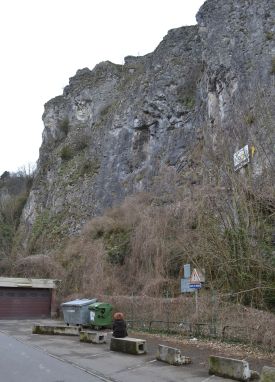
Part of Montagne de la Croix
It was now just after 1pm and the rest of my day was therefore mapped out. I could move on to my next destination, not see the bird and accept a frustrating dip (which was unthinkable having travelled so far) or stay here until roost time but hope the bird might show itself earlier. The two ladies soon left, then a resident walked through and showed me another nearby spot that the Wallcreeper frequents. At 2:45pm the sun came out but things were becoming a lonely vigil. After two breaks, one to take better pictures around town and the other for a welcome beer, I came back just before 5pm and more locals then began to appear.
This was clearly the business end of the day. The first birder to arrive, Robin Gailly pointed out the gap under the eaves on the back wall of the Palais de Justice where the bird goes to roost, and said it had been active on the cliff face for an hour before doing so on Saturday. The significance of that timing was of course not lost on me, and my companion explained that the whole cliff face in this part of Dinant is known as Montagne de la Croix. As more birders joined us further local knowledge flowed. I learned all the Wallcreeper’s favoured haunts, some of which different people went off to check while I stayed put.
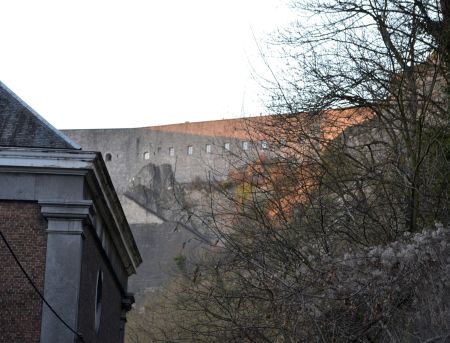
The Wallcreeper roosts under the eaves above the circular window of the Palais de Justice
At just after 6:30pm Robin located the bird distantly on the walls of the citadel (pictured above). We watched it busying itself for about 10 minutes then it flew our way. Eventually the object of my quest arrived on the cliff face above us foraging for insects, flashing it’s colours and offering superb views. What a beauty, with a character and charm all of its own: slate grey with deep magenta fluffy bits, almost mouse-like and in perpetual motion. Had the six hour wait been worth it? Of course it had. Lastly the Wallcreeper transferred to the Palais wall before disappearing in an instant into its’ chosen dark hiding place. Bed time.
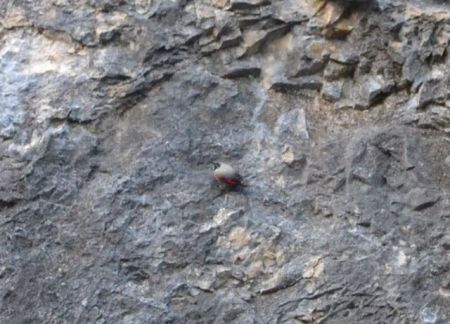
Wallcreeper in failing light
Here are some better images of the same bird (in winter plumage)
© rights of owners reserved
My day in Dinant had been a truly memorable one. After success with Egyptian Vulture in Fuerteventura last month, another straggler had been struck off my southern Europe wish list and I moved on to Belgium’s northern heaths to seek out another lifer, Black Woodpecker.
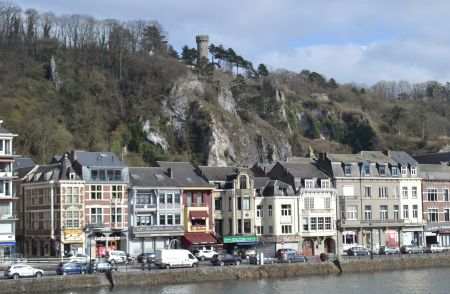
Montagne de la Croix (above buildings)

